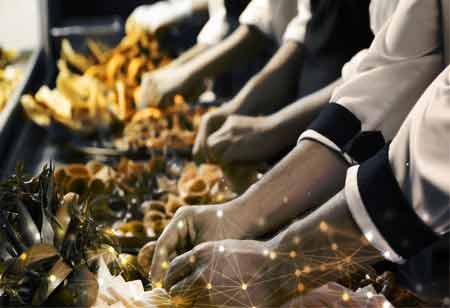Thank you for Subscribing to Food Business Review Weekly Brief
- Home
- Topics
- Alternative Proteins and Plant Based Food
- Beer and Wine
- Canned Beverages
- Coffee And Tea
- Food and Beverage Consulting
- Food and Beverage Financial Service
- Food And Beverages Marketing
- Food Distributors
- Food Ingredients
- Food Sustainability
- Plant Based Food and Beverages
- Seafood Suppliers
- Supplement Manufacturing
- Wine Investment
- News
- Vendor Viewpoint
- CXO Insights
- Conferences
- Newsletter
- CXO Awards
-
Wine Industry Steps into Digital Age: Everything You Need to Know
The same procedures have been employed by winemakers worldwide for millennia to harvest, crush, ferment, clarify, age, and bottle wine.

By
Food Business Review | Thursday, March 23, 2023
Stay ahead of the industry with exclusive feature stories on the top companies, expert insights and the latest news delivered straight to your inbox. Subscribe today.

Automation has enabled winemakers to reimagine legacy processes and bring winemaking into the digital age by eliminating human error, eliminating guesswork, and preparing for the unexpected.
FREMONT, CA: The same procedures have been employed by winemakers worldwide for millennia to harvest, crush, ferment, clarify, age, and bottle wine. While there are differences and departures amongst well-known wine regions like Tuscany, Napa, and Sonoma, the conventional and fairly rigid process of creating wine has generally stayed the same for over 8,000 years.
This is going to change, thanks to the power of automation.
Winemakers have had to invent and adapt new technology to climate change. Other external events (such as floods, fires, and droughts) increasingly have an impact on vineyards around the world. This is done to maximize crop yield and reduce bottlenecks along the supply chain. Because of this, the wine industry is experiencing a technology revolution, utilizing automation and predictive technologies to rethink traditional processes for the first time in the sector's history.
These are three ways automation transforms the winemaking sector and assists winemakers in ensuring this season's harvest will be the greatest yet.
Eliminating Uncertainty in Grape Production
Every excellent bottle of wine has a winemaker passionate about cultivating and maintaining grapes, a complex process that demands extraordinary attention to detail. Every decision made during the growth process, from caring for the grapevines to choosing when to harvest, can significantly impact the final result. Automation allows winemakers to "see" how their decisions affect their vineyards in real-time, eliminating uncertainty in grape production and ensuring that facts support every decision.
Today, vignerons can install sensors all over their vineyards before harvesting grapes for wine, providing them rapid access to data on fertility and moisture levels, sugar irregularities, pests, and more. By using more accurate agricultural methods, vignerons can reduce water use, waste, and emissions and identify process variability before the crop is brought in for harvest. By doing this, winemakers may increase yields and guarantee uniformity before the grapes are ever picked.
Reducing Human Error
Internal difficulties can impact the quality of wine in barrels during the fermentation process, such as human error brought on by fatigue and mistakes in judgment, in addition to external elements that impact the winemaking process. Sadly, winemaking teams frequently only become aware of these problems once the fermentation process is done, which leads to product loss, an increase in waste, and a decline in the flavor quality of the wine.
Nevertheless, by utilizing automation developments, winemakers may combine data to more fully comprehend what's happening in each barrel, recognizing issues and taking corrective actions (either locally or remotely) before it's too late. These internal differences are easily handled because technology can continuously aggregate real-time data. This enables winemakers to confidently depend on incoming data to help keep the metaphorical train on the tracks and ensure that the wine continues to taste as it should bottle after bottle.
Aiding with the Planning of the Unexpected
The climate crisis has decimated wineries worldwide in recent years, just like the rest of the agriculture sector, subjecting vines to more unstable and harsh weather patterns. A recent study revealed that a two-degree Celsius rise in temperature might result in a 56 percent decrease in the number of places appropriate for growing wine. Think about it: more than half of our favorite wine areas could disappear with just a 2 percent rise in temperature. This alone demonstrates how crucial it is to act quickly and preventively to safeguard vineyard output yields.
While planning for outside influences like wildfires, climate change, and other things might be challenging, data-based solutions can foster industry resilience and agility to reduce their effects. Vignerons can better understand how such external influences will impact their crop and what will be required to correct them by combining historical and present data with post-factum assessments. Without a doubt, the climate crisis won't end any time soon. Yet, vintners may ensure they're taking the essential precautions using automation and data analysis.






